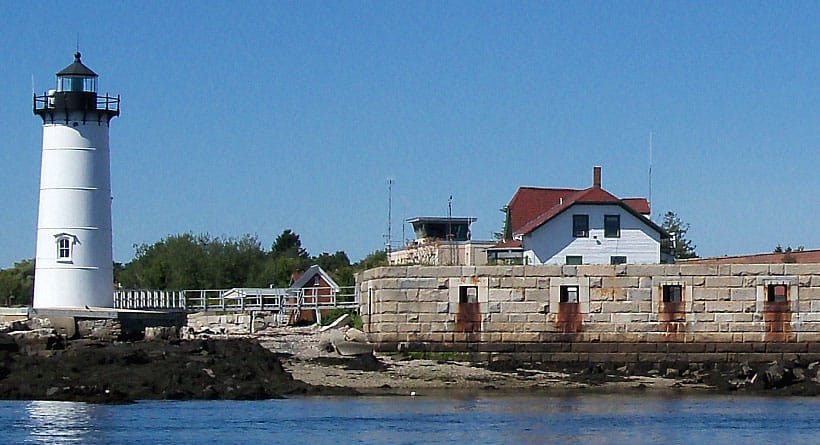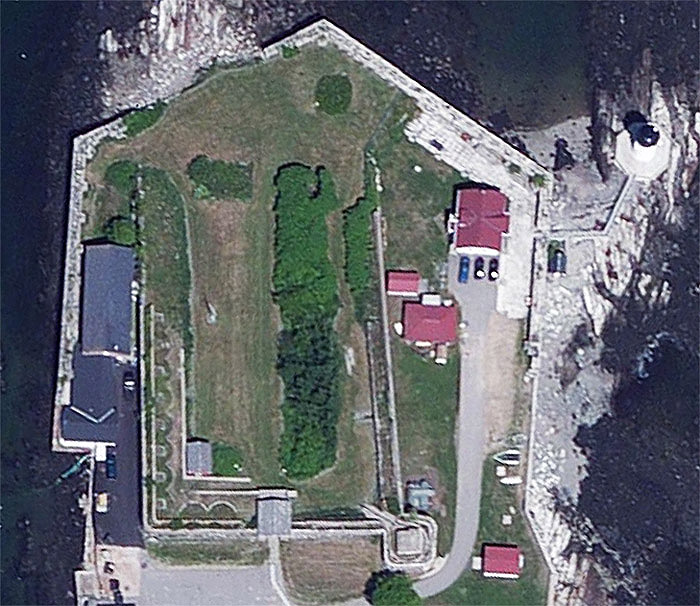
Echoes of Liberty: Fort Constitution’s Unsung Prelude to Revolution
Perched on a rocky promontory at the mouth of the Piscataqua River, where the tumultuous waters of the Atlantic meet the tranquil expanse of New Hampshire’s Great Bay, stands Fort Constitution. For centuries, this strategic site in New Castle has witnessed the ebb and flow of history, silently guarding one of New England’s most vital harbors. Yet, despite its venerable age and pivotal role in the very genesis of the American Revolution, Fort Constitution often remains a footnote in the grand narrative of American independence, overshadowed by the more widely celebrated events of Lexington and Concord.
But to dismiss Fort Constitution as a mere footnote would be to overlook a daring act of defiance that truly ignited the fuse of revolution, an act that occurred months before the "shot heard ’round the world." Here, on a cold December day in 1774, American colonists, driven by a burgeoning spirit of liberty, executed a raid that marked the first overt act of aggression against British rule, seizing gunpowder and arms that would ultimately fuel the fight for freedom.
A Colonial Bastion: From Fort William and Mary to Fort Constitution

The story of Fort Constitution begins long before the cries of "No taxation without representation!" echoed through the colonies. As early as 1632, the strategic importance of the Piscataqua River’s mouth was recognized. Early settlers erected rudimentary fortifications to protect the burgeoning port of Portsmouth, a critical hub for trade and shipbuilding. By 1666, a more substantial structure, a stone tower known as "The Great Fort," was established.
Over the next century, these defenses evolved. In 1692, during King William’s War, the fort was rebuilt and officially named Fort William and Mary, honoring the reigning British monarchs. Its primary purpose was clear: to protect the harbor from French and Spanish privateers and to ensure the safe passage of merchant ships. Cannons mounted on its ramparts stood ready to repel any maritime threat, making it a symbol of British authority and a vital component of colonial defense.
However, as the 18th century wore on, the relationship between the American colonies and Great Britain grew increasingly strained. The aftermath of the French and Indian War, coupled with a series of unpopular taxes and acts – the Stamp Act, the Townshend Acts, and most recently, the Intolerable Acts – fueled widespread resentment. The British government, seeking to assert its control, began to reinforce its garrisons and stockpile military supplies in key colonial locations. Fort William and Mary, with its strategic location, became one such repository.
The Spark of Rebellion: December 1774
The tension reached a boiling point in late 1774. News traveled slowly in those days, but when it did, it spread like wildfire. On December 10th, Paul Revere, the legendary messenger of the American Revolution, embarked on yet another crucial ride, not from Boston to Lexington, but from Boston to Portsmouth. His urgent mission was to warn the New Hampshire Sons of Liberty that King George III had issued an order prohibiting the export of arms and ammunition to America, and that two British warships, HMS Scarborough and HMS Canceaux, were en route to seize the gunpowder and cannons at Fort William and Mary.
The message was received with a mixture of alarm and resolve. The Sons of Liberty, led by the charismatic and daring Major John Sullivan, a lawyer and future brigadier general, and Captain John Langdon, a prominent merchant and future governor, knew they had to act swiftly. They understood the gravity of the situation: if the British secured the fort’s arsenal, it would significantly cripple any colonial resistance.
On December 14, 1774, a day etched into the annals of New Hampshire history, approximately 400 militiamen from Portsmouth and surrounding towns gathered. Armed with muskets, axes, and an unshakeable determination, they marched to New Castle. Their target: Fort William and Mary, defended by a small garrison of just six soldiers under the command of Captain John Cochran.
"We marched in the greatest haste, and found the fort in a posture of defence," Sullivan later wrote to the New Hampshire Provincial Congress. "We immediately surrounded it, and demanded the surrender of the fort, which Capt. Cochran refused to do."

What followed was a confrontation that, while lacking the large-scale bloodshed of later battles, was no less revolutionary. The colonists, overwhelming the small garrison, stormed the fort. Accounts suggest the British soldiers fired a warning shot, but it was quickly returned by the advancing colonists. This exchange, though brief, is arguably the first time American colonists fired upon British forces in an armed conflict of the Revolution.
The colonists quickly subdued Captain Cochran and his men. They lowered the British flag, an act of profound symbolism, and raised their own makeshift banner. Over the course of that day and the following day, December 15th, they systematically removed 100 barrels of gunpowder, 16 cannons, and a quantity of muskets and other supplies.
The gunpowder was ingeniously spirited away. Some barrels were loaded onto gondolas and rowed up the Piscataqua River, then hidden beneath the pulpit of the Durham Meetinghouse, Sullivan’s hometown church. Other supplies were buried in various locations, ensuring they would be safe from British recapture. This precious gunpowder would later be used at the Battle of Bunker Hill, making Fort Constitution’s raid a direct precursor to one of the Revolution’s most iconic early engagements.
The significance of this event cannot be overstated. "This was, without question, the first organized military action of the American Revolution," notes historian J. Dennis Robinson. "It was an act of war, taken directly against the King’s forces, and it happened four months before Lexington and Concord." It was a bold declaration of defiance, demonstrating that the colonists were not merely protesting but were prepared to use force to defend their rights.
A Nation’s Defense: From Revolution to Modern Times
With the outbreak of the Revolutionary War, Fort William and Mary, now firmly in American hands, was renamed Fort Constitution, a powerful testament to the ideals the colonists were fighting for. It played a vital, albeit less dramatic, role in defending Portsmouth throughout the war, preventing any significant British naval incursions into the harbor.
The fort continued to be a critical defensive outpost for the young United States through the 19th and 20th centuries. During the War of 1812, its defenses were upgraded and expanded, reflecting the ongoing need to protect American shores. New earthworks and gun emplacements were added, solidifying its role as the primary guardian of Portsmouth Harbor.
The Civil War saw further modifications, though the fort was far from the major theaters of conflict. Its strategic value remained in its ability to deter coastal attacks and serve as a training ground for artillerymen. The late 19th century brought about the "Endicott Period" of coastal defense, a nationwide initiative to modernize American fortifications. Fort Constitution underwent significant reconstruction during this era, with massive concrete batteries built to house advanced breech-loading rifles and mortars. These modern armaments, capable of firing shells miles out to sea, dramatically altered the fort’s appearance and capabilities.
Both World War I and World War II saw Fort Constitution reactivated and manned. While the threat of a direct naval assault on Portsmouth diminished over time, the fort’s batteries, such as Battery Farnsworth and Battery Hackleman, were integrated into the broader coastal defense network of New England. Soldiers patrolled its grounds, and lookouts scanned the horizon for enemy vessels. However, with the advent of air power and long-range missile technology, fixed coastal fortifications like Fort Constitution gradually became obsolete. By the end of World War II, its active military life drew to a close.
A Beacon of History: Fort Constitution Today
Today, Fort Constitution is no longer a military stronghold but a New Hampshire State Historic Site, managed by the Division of Parks and Recreation. It stands as a powerful reminder of the nation’s struggle for independence and its evolving defense strategies. Visitors can explore the layered history of the site, from the weathered stone walls of the original colonial fort to the imposing concrete structures of the Endicott Period.
The grounds offer panoramic views of the Atlantic Ocean, the Piscataqua River, and the picturesque Portsmouth Harbor Lighthouse, which has stood proudly within the fort’s walls since 1804. The lighthouse itself is a beacon of continuity, guiding mariners through these challenging waters for over two centuries, much as the fort once guided the nation through turbulent times.
Walking through the crumbling barracks, examining the massive concrete gun emplacements, and tracing the outlines of the original colonial fort, one can almost hear the echoes of history. The air seems to hum with the ghosts of soldiers, patriots, and rebels. Interpretive signs guide visitors through the different eras, explaining the architectural changes, the types of armaments used, and the daily lives of those who served there.
Fort Constitution serves as a vital educational resource, particularly for understanding the often-overlooked events leading up to the American Revolution. It provides a tangible link to the bravery and foresight of individuals like John Sullivan and John Langdon, who, by their actions in 1774, dared to challenge the might of the British Empire. Their raid on Fort William and Mary was not just a seizure of supplies; it was a symbolic act of self-determination, a declaration that the colonists would no longer tolerate tyranny.
In a nation that rightly celebrates its foundational moments, Fort Constitution deserves a more prominent place in the collective memory. It is a place where history feels palpable, where the spirit of defiance and the pursuit of liberty first took armed form on American soil. As the waves crash against the rocky shore, and the wind whispers through the ancient walls, Fort Constitution stands as an enduring testament to the courage of a young nation, forever guarding the memory of its own quiet revolution. Its story is a powerful reminder that sometimes, the most significant acts of rebellion begin not with a bang heard around the world, but with a daring raid on a remote colonial outpost.


